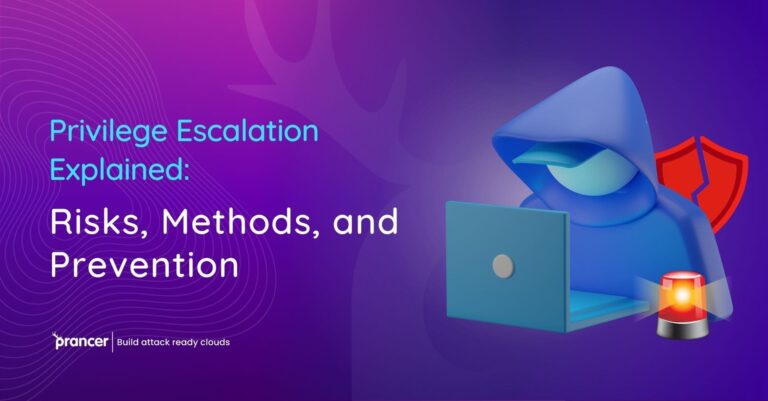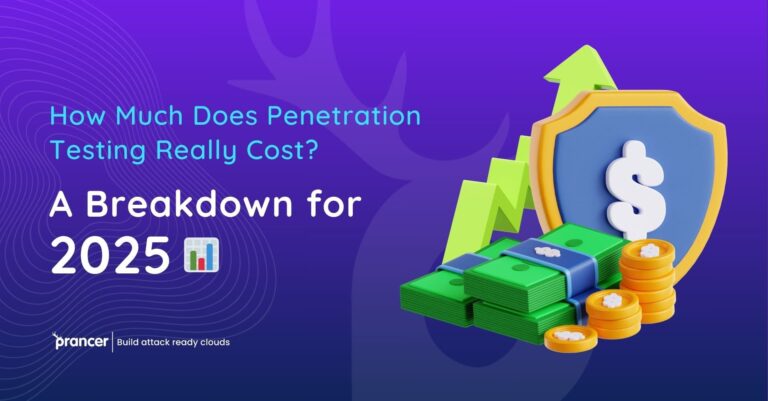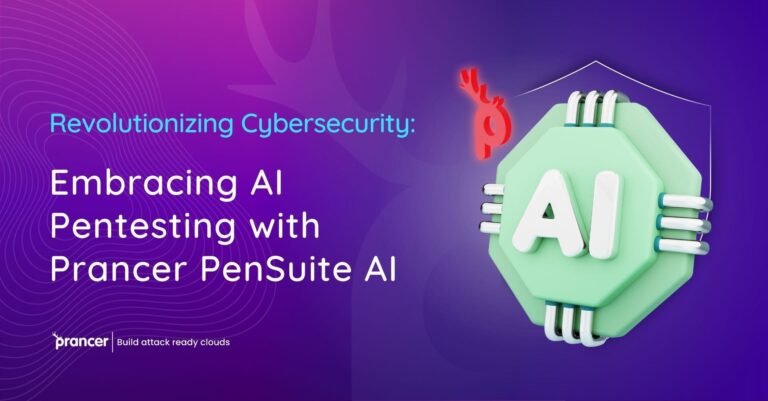




In the dynamically evolving domain of cybersecurity, cloud pentesting emerges as a vital undertaking for enterprises aiming to safeguard their digital realms. As cloud realms expand, so do the malicious threats aimed at them. In this narrative, we will explore five central approaches to conducting effective evaluations, ensuring your digital horizon remains secure. Regardless of whether you’re a seasoned cybersecurity veteran or a newcomer, these insights are fundamental in fortifying your organization’s cloud stronghold.
Cloud pentesting is an essential undertaking for businesses that are serious about safeguarding their digital assets in the fast-paced world of cyber security. As the extent of cloud environments expands, they become more and more vulnerable to advanced cyber menaces. In this discussion, therefore, will list five important steps for effectual cloud penetration tests geared at guaranteeing the safety of your cyber empire. We will address automated penetration testing and shed light on its specifics important for both experienced security professionals as well as beginners and would allow strengthening the protection of your enterprise’s cloud infrastructure.
Cloud pentesting, or cloud penetration testing, is an organized venture to evaluate an organization’s cloud setup to pinpoint vulnerabilities, frailties, and looming security threats. It encompasses simulated onslaughts on cloud setups and services to discover weaknesses before they fall prey to malicious entities. The essence of cloud pentesting lies in augmenting an organization’s security stance in the cloud, thwarting potential data compromise, service interruptions, or unauthorized infiltrations.
Core Approach 1: Holistic Cloud Pentesting Assessment
The essence of cloud pentesting is rooted in a thorough examination. A holistic assessment scrutinizes every facet of your cloud setup, spanning infrastructure, applications, data repositories, and access governance. A meticulous assessment unveils concealed vulnerabilities that might escape a superficial glance. Prancer, a vanguard in cloud security, is adept at furnishing holistic cloud pentesting evaluations, custom-fitted to your distinct requisites.
Core Approach 2: Harnessing Automated Penetration Testing
In the contemporary cloud pentesting arena, automated penetration testing instruments are indispensable. They refine the evaluation process by swiftly pinpointing weaknesses and offering actionable recommendations. Prancer’s cutting-edge automated penetration testing solutions meld seamlessly with your cloud setup, facilitating perpetual monitoring and evaluation, adapting alongside your evolving infrastructure.
Core Approach 3: Sustained Assessment and Rectification
The volatile nature of cyber threats and the ceaseless evolution of cloud setups render a one-off assessment inadequate. Prancer underscores the significance of sustained evaluation and rectification. Periodic testing of your cloud infrastructure and swift redressal of identified vulnerabilities is pivotal for upholding a robust security stance.
Core Approach 4: Emulating Threats and Scenario-centric Testing
Bracing for real-world threats necessitates the emulation of diverse attack scenarios during cloud pentesting. Prancer’s prowess in threat emulation enables organizations to gauge their preparedness and reaction aptitudes. Scenario-centric testing certifies that your brigade is primed to counter a broad spectrum of cyber onslaughts.
Core Approach 5: Synergy and Up-skilling
Successful cloud pentesting is the fruit of collective endeavor. Synergy between your IT and security factions is crucial to effectively safeguard your digital horizon. Prancer extends exhaustive training regimes to equip your team with the requisite knowledge and proficiency to discern, alleviate, and avert cloud security hazards efficiently.
Testing for cloud security is very important for businesses to protect their online spaces because cyber threats are growing. This process needs a complete check of cloud setup, including apps and data control. Tools such as Prancer help with this by giving special assessments. Key strategies include:
Automated Testing: Use powerful tools to find weaknesses easily and regularly check the computer system.
Ongoing Evaluation: Keep checking and fixing weaknesses to keep a good safety position.
Threat Simulation: Use Prancer’s knowledge of simulations for complete attack readiness by applying scenario-based testing.
Collaborative Efforts: Make the IT and security teams work better together. Train them well for handling risks more effectively.
Working on these parts, especially automation and training of teams helps a business’s cloud security to fight against new dangers.
Improving cloud pentesting using automated penetration testing is an effective tactic for organizations seeking to strengthen their cybersecurity arsenal. This section further discusses the role of automated methods in cloud pentesting processes and how they can dramatically improve an enterprise’s security posture.
Developments in Automated Cloud Penetration Testing
Integration of AI and Machine Learning: AI and machine learning algorithms are used by automated penetration testing tools to detect sophisticated attack patterns and forecast possible weaknesses in cloud systems. This consolidation enables smarter, adaptive and more comprehensive testing.
Automated Compliance Checks: As the role of regulatory compliance has become more significant, automated penetration testing tools like Prancer incorporate functions that compare cloud arrangements with conformity standards including GDPR, HIPAA and others to guarantee that an organization’s cloud environment is in line with required legal framework.
Customizable Testing Scripts: These modern automated tools allow customizable testing scripts so that security teams can change their approach depending on the architecture and use case of a cloud environment. This customization guarantees better testing results.
Continuous and Real-Time Testing: To highlight the dynamic nature of cloud environments, sophisticated tools conduct continuous and real-time penetration testing. This continual assessment approach guarantees the early detection and mitigation of vulnerabilities as they arise, providing a preemptive security position.
Empowering Teams with Automation
Enhancing Team Capabilities: Not only do automatic penetration testing tools identify vulnerabilities but they also provide in-depth information and recommendations. This enables security teams to appreciate the peculiarities of cloud vulnerabilities and strengthens their ability to respond adequately.
Reducing Human Error: Automation reduces the likelihood of human error during testing. Tools such as Prancer ensure that no part of the cloud environment is missed during security assessments through consistent and repeatable testing processes.
Scalability and Efficiency: Automated tools are able to manage the size of contemporary cloud environments, which can be too big and intricate for manual test procedures. This scalability ensures complete coverage of the whole cloud infrastructure.
Prospective Strategies in Cloud Pentesting
Embracing a Predictive Security Posture: The predictive security model is the direction where future-oriented organizations are heading, as automated tools not only identify current weaknesses but also anticipate upcoming threats based on trends in cyberattacks.
Developing Resilient Cloud Architectures: Automated penetration testing helps build robust cloud architectures that can adapt to the ever-changing cyber threats, making sure that security considerations are incorporated into architecture at all levels.
Enhanced Incident Response: Incorporating automated penetration testing tools into incident response platforms enables organizations to achieve faster and more efficient responses when addressing security breaches.
It is no longer optional to implement automated penetration testing in cloud pentesting strategies but a necessity for modern organizations. It provides a holistic, robust and proactive solution to securing cloud environments from the ever-growing cyber threats that are also constantly evolving. Using these cutting-edge tools and methodologies, organizations can guarantee that their cloud architectures are strong, compliant with the rules of digital era’s ,and resilient to challenges.
Implementing automatic penetration testing in cloud pentesting is essential for modern organizations. This approach focuses on proactive vulnerability management, integrating security directly into development pipelines, and extending coverage to emerging cloud technologies. Automated tools offer advanced reporting and analytics, enabling data-driven security decisions. They also support a “security by design” philosophy, incorporating AI for predictive insights and fostering collaborative security practices. Furthermore, these tools adapt to regulatory changes, ensuring ongoing compliance. Overall, this strategy ensures comprehensive, adaptable, and forward-looking cloud security.
On the other hand, nowadays cloud pentesting has become a powerful defensive mechanism that ensures protection of digital infrastructures. But as cloud technologies grow and develop, they may become targets of more complicated cyber threats that need considerable security measures. In this regard, organizations are adopting more complex approaches that combine innovative automated penetration testing with strategic security practices.
Essential Strategies for Robust Cloud Pentesting:
Secure Cloud Architecture: But it is necessary to lay a strong architectural foundation from the beginning. This is what we call layering security throughout the entire cloud sphere, from infrastructure to applications.
Automated Penetration Testing with AI Integration: AI and machine learning in automated pentesting tools is an innovative step. The following tools can detect advanced threats and potential vulnerabilities, thereby improving the accuracy of cloud security evaluation.
Continuous and Adaptive Security Measures: Given the volatile nature of cloud computing, continuous monitoring is necessary. Automated tools provide continuous monitoring and real-time assessments that help identify security threats in a timely manner.
Compliance and Customization in Testing: With the growing importance of regulatory standards, pentesting tools that enable custom testing and compliance with regulation become necessary.
Cultivating a Proactive Security Culture: Organizations should create a culture of security awareness. This includes ongoing training, joint practice and timely interaction between the IT personnel and security teams in order to prevent cyber threats.
The Importance of Automated Penetration Testing for Cloud Security:
Therefore, automated pentesting is a vital component of modern cloud security practices. It offers a holistic, evolutionary and future-oriented approach to combating novel cyber threats. With the help of modern tools and techniques, organizations can not only make their cloud infrastructure secure but also immunize it against such a complex cyber landscape. This entire approach that integrates advanced technology with a proactive security mindset has become essential in the cloud environment to safeguard digital assets.
Conclusion:
To sum up, the continuous adoption of automated penetration testing is core in the world of the cloud cybersecurity. Such advanced method not only detects present vulnerabilities but also envisages future threat possibilities, thus creating a holistic, adaptive and future-oriented protective system against cyber risks. Through the integration of AI, and machine learning, these tools improve accuracy and efficiency of cloud pentesting, facilitating the continuous monitoring and the real time assessments. The adoption of a proactive security culture, as well as the implementation of automated penetration testing, let organizations construct elastic and healthy cloud architectures. In the end, this guarantees that the digital assets of an organization are safe at present and are ready enough to cope with evolving challenges of the digital era. Automated penetration testing, therefore, is among the key defense tools of a modern organization that is struggling to strengthen its cloud infrastructure against the variety of cyber threats.
In an epoch where cloud frameworks are the linchpin of digital undertakings, fortifying your digital sky via cloud pentesting is imperative, not optional. Prancer stands as a reliable ally in cloud security, extending the acumen and tools indispensable for bolstering your cloud infrastructure. By embracing these five core approaches for effective evaluations, you can actively shield your organization against morphing cyber threats, ensuring an elevated level of security in the cloud.
